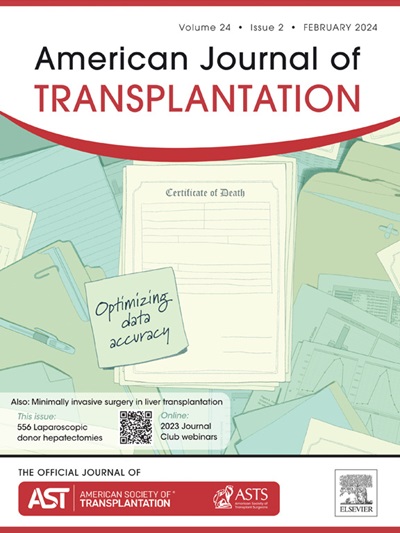Why partial heart transplantation could be regulated as organ transplantation
IF 8.9
2区 医学
Q1 SURGERY
引用次数: 0
Abstract
Partial heart transplant (PHT) is a recent clinical innovation involving the transplantation of a segment of the heart (valves) directly from the deceased donor into the recipient patient. This procedure holds out the possibility of significant benefit, especially for pediatric patients because these grafts show growth potential after transplant, reducing or eliminating the current need for repeat procedures. The clinical process for donation and transplant of partial heart (PH) grafts generally follows an organ clinical pathway; however, the Food and Drug Administration has recently stated its intent to regulate PH as tissues, raising a host of regulatory considerations. PHT requires donor testing and eligibility determinations within a short, clinically viable timeframe and, similar to organ transplant, involves donor-recipient matching. Waitlist allocation policies that are a regulatory focus of the Organ Procurement and Transplantation Network including equity and efficiency may become relevant. Oversight of PHT by the Organ Procurement and Transplantation Network could be accomplished through interpretation of the vascular composite allograft definition or through designation by the US Department of Health and Human Services of PH grafts as organs. While some clinical questions remain unanswered, it is important to carefully address these regulatory considerations to support the emergence of this innovation and ensure the continued trust of the donating public and the patients who may benefit from PHT.
为什么可以将部分心脏移植作为器官移植来管理。
部分心脏移植(PHT)是最近的一项临床创新,它是将已故捐献者的一段心脏(瓣膜)直接移植到受体病人体内。这种手术有可能带来巨大的益处,尤其是对儿童患者而言,因为这些移植物在移植后显示出生长潜力,从而减少或消除了目前重复手术的需要。部分心脏(PH)移植物捐献和移植的临床程序一般遵循器官临床路径;但是,美国食品药品管理局最近表示有意将 PH 作为组织进行监管,这就引起了一系列监管方面的考虑。PHT 需要在短时间内对捐献者进行测试并确定其是否符合临床要求,而且与器官移植类似,涉及到捐献者与受捐者的匹配问题。作为器官获取和移植网络监管重点的候选名单分配政策,包括公平和效率,可能会变得相关。器官获取与移植网络对 PHT 的监督可通过对血管复合异体移植物定义的解释或通过美国卫生与公众服务部将 PH 移植物指定为器官来实现。虽然一些临床问题仍未得到解答,但必须认真解决这些监管方面的问题,以支持这一创新技术的出现,并确保捐赠公众和可能受益于 PHT 的患者继续信任 PHT。
本文章由计算机程序翻译,如有差异,请以英文原文为准。
求助全文
约1分钟内获得全文
求助全文
来源期刊
CiteScore
18.70
自引率
4.50%
发文量
346
审稿时长
26 days
期刊介绍:
The American Journal of Transplantation is a leading journal in the field of transplantation. It serves as a forum for debate and reassessment, an agent of change, and a major platform for promoting understanding, improving results, and advancing science. Published monthly, it provides an essential resource for researchers and clinicians worldwide.
The journal publishes original articles, case reports, invited reviews, letters to the editor, critical reviews, news features, consensus documents, and guidelines over 12 issues a year. It covers all major subject areas in transplantation, including thoracic (heart, lung), abdominal (kidney, liver, pancreas, islets), tissue and stem cell transplantation, organ and tissue donation and preservation, tissue injury, repair, inflammation, and aging, histocompatibility, drugs and pharmacology, graft survival, and prevention of graft dysfunction and failure. It also explores ethical and social issues in the field.

 求助内容:
求助内容: 应助结果提醒方式:
应助结果提醒方式:


